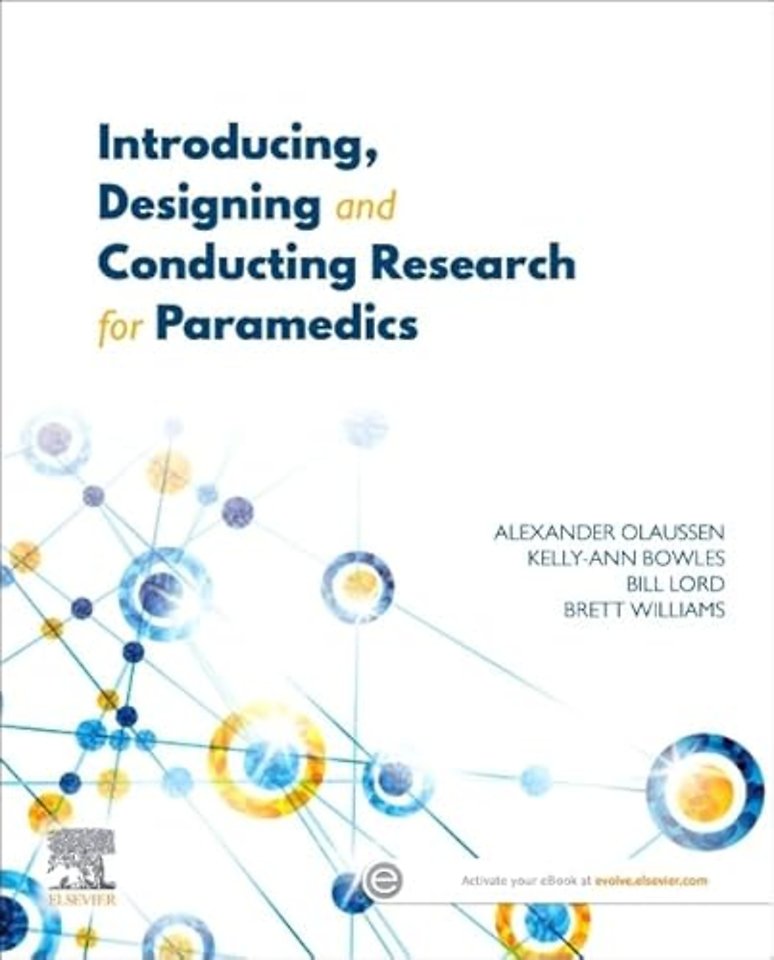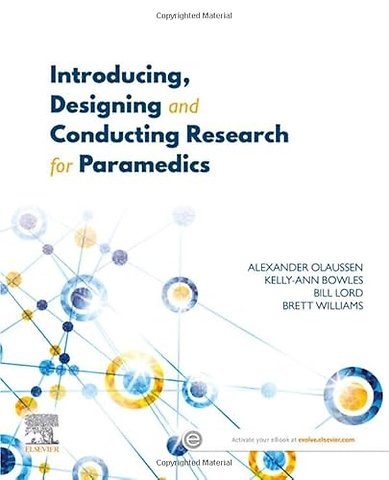<p>Section 1: Introduction to research</p> <p>Part One: Welcome to your research journey<br>1. Historical perspectives and the emergence of research in healthcare<br>2. The importance of research for paramedicine as a profession<br>3. Evidence based practice for paramedicine<br>4. How to use this book</p> <p>Part Two: Starting at the start<br>5. How to determine what topic to research?<br>6. Asking the answerable question and how to know which way to answer it<br>7. What to do before you start<br>8. Theoretical and conceptual frameworks<br>9. Overview of research designs and the hierarchy of evidence<br>10. Thinking about ethics in research</p> <p>Section 2: Preparing for the research</p> <p>Part Three: Finding what has already been done (i.e. Literature reviews / secondary research)<br>11. Literature reviews process and production software<br>12. Sourcing the available evidence (primary, secondary and tertiary evidence)<br>13. Appraising and critiquing the evidence (anecdotal, observational, experimental)<br>14. Structured reviews including Umbrella reviews, scoping reviews, rapid reviews, and narrative reviews<br>15. Cochrane reviews and systematic reviews (including meta-analyses and meta-synthesis)</p> <p>Part Four: Methodological considerations<br>16. Moral principles and ethical considerations<br>17. Data collection and storage<br>18. Reliability and validity in quantitative and qualitative research<br>19. Sampling (probability sampling/random sampling vs non-probability/non-random sampling)<br>20. Sample size and power calculation<br>21. Assessing bias<br>22. Cross-cultural considerations Culturally inclusive considerations in paramedic research</p> <p>Section 3: Explaining the what (Quantitative)</p> <p>Part Five: Quantitative research designs<br>23. Case reports and case series<br>24. Cross sectional studies<br>25. Case control studies<br>26. Cohort studies and registry studies<br>27. Randomised Controlled Trials<br>28. Experimental studies other than RCTs</p> <p>Part Six: Statistics/quantitative analysis<br>29. Data collection tools/approaches for quantitative research<br>30. Type of quantitative data (continuous, categorical, distributions, skewness)<br>31. Descriptive statistics, missing data, and testing assumptions<br>32. Statistical significance, P values, effect sizes and confidence intervals<br>33. Inferential statistics: t-tests, regression analysis and adjustments (Mediation versus Moderation)<br>34. Survival analysis</p> <p>Section 4: Explaining the why (Qualitative)</p> <p>Part Seven: Qualitative research designs<br>35. Phenomenology<br>36. Action Research<br>37. Case Study<br>38. Ethnography<br>39. Grounded Theory</p> <p>Part Eight: Qualitative analysis<br>40. Data collection approaches for qualitative research<br>41. Data collection in qualitative research<br>42. Types of qualitative data (quote, observations)<br>43. Developing themes</p> <p>Section 5: Other ways to answer the question</p> <p>Part Nine: Combining research methods and other designs<br>44. Mixed methodology design<br>45. The Delphi Technique<br>46. The Nominal Group Technique<br>47. Cost benefit/cost effectiveness research</p> <p>Section 6: Sharing new knowledge</p> <p>Part Ten: Disseminating and implementing research<br>48. Writing the paper (including use of tables/figures etc)<br>49. The implementation (translation) process<br>50. Presenting and getting your research published<br>51. Research dissemination and bibliometrics<br>52. Grant writing/building teams/collaboration</p> <p>Part Eleven: The Future of Paramedicine research, Summary and Conclusion<br>53. Setting up the Future of Paramedicine<br>54. Summary, recommendations and conclusions</p>

